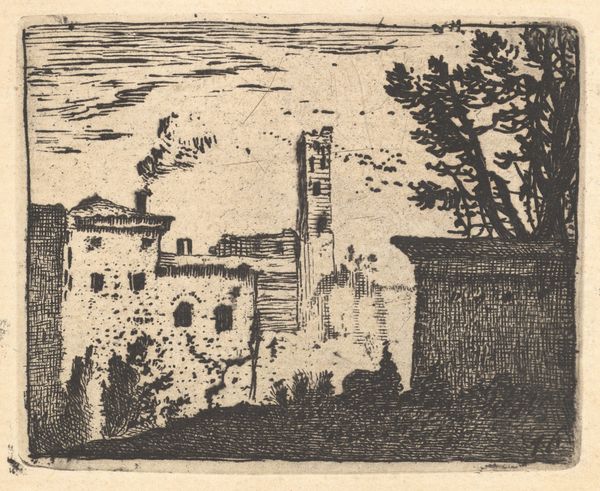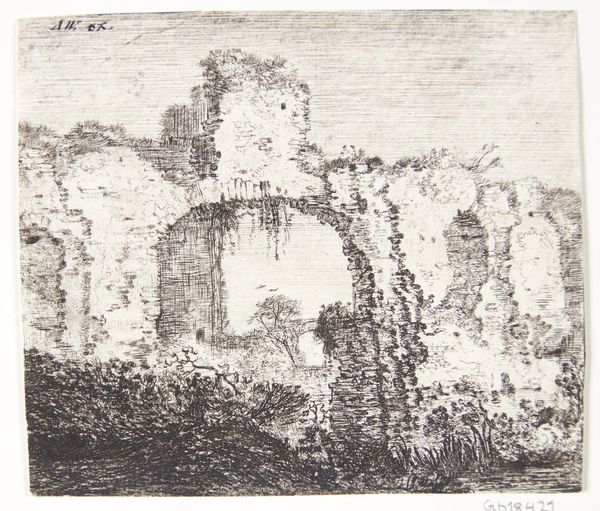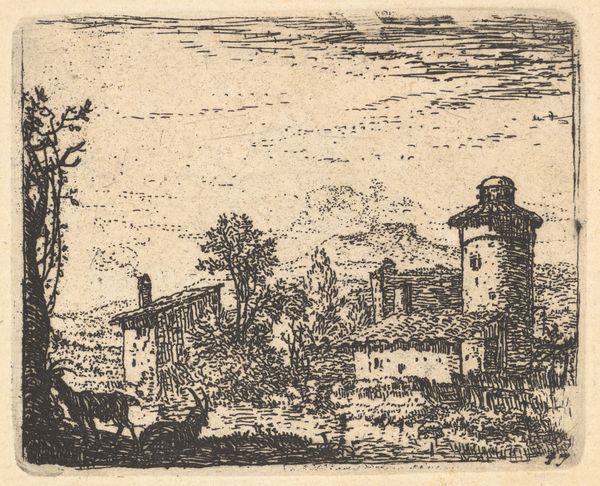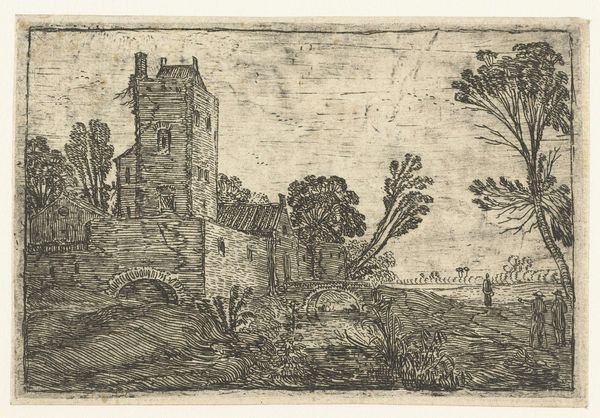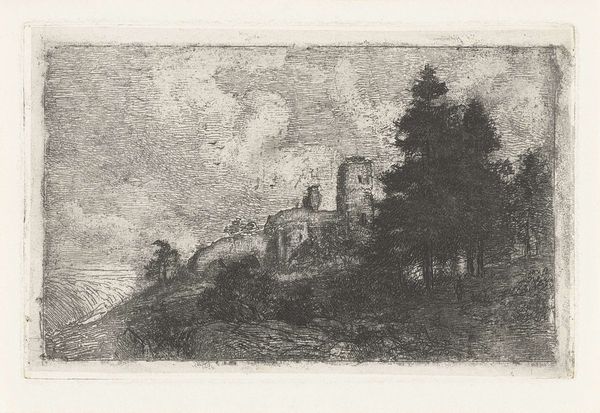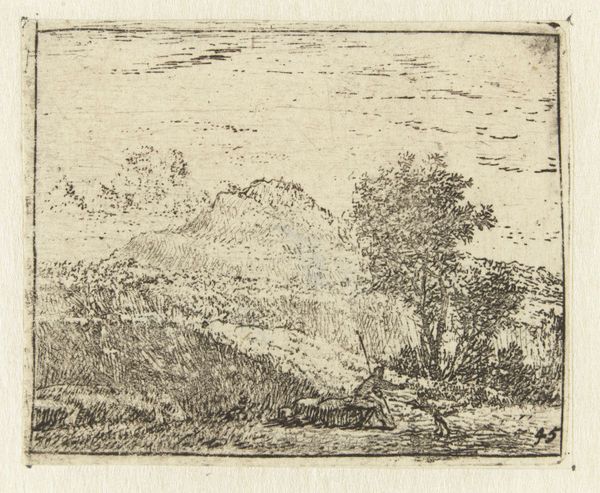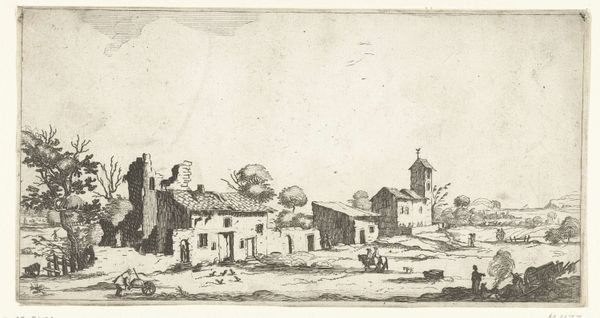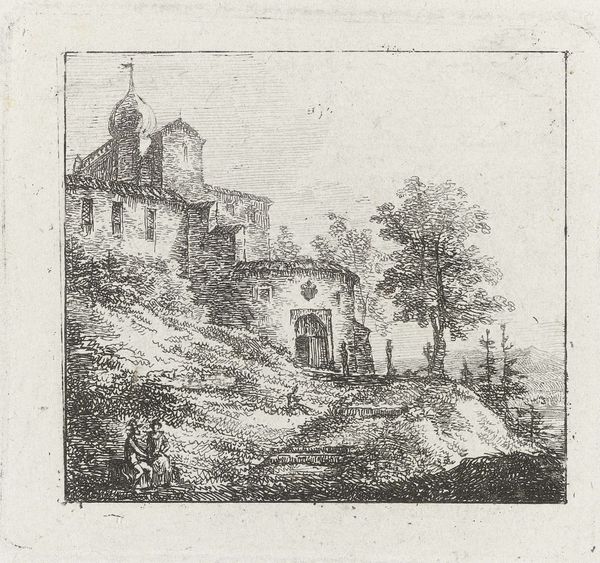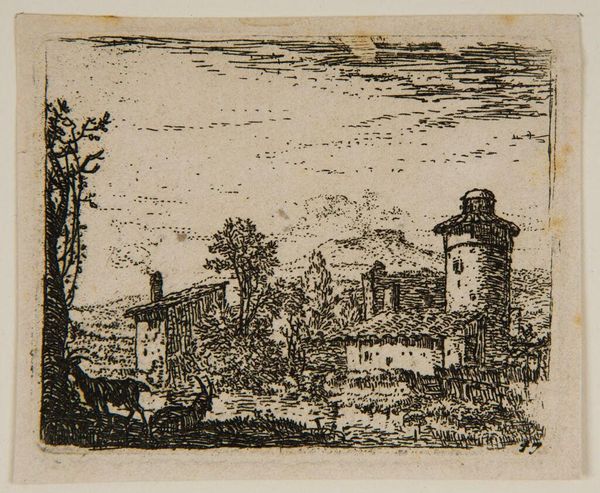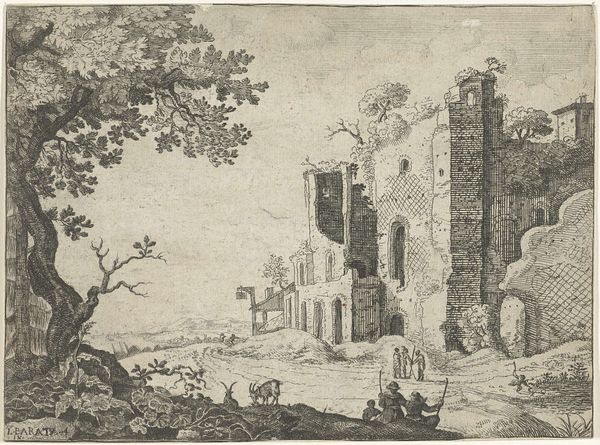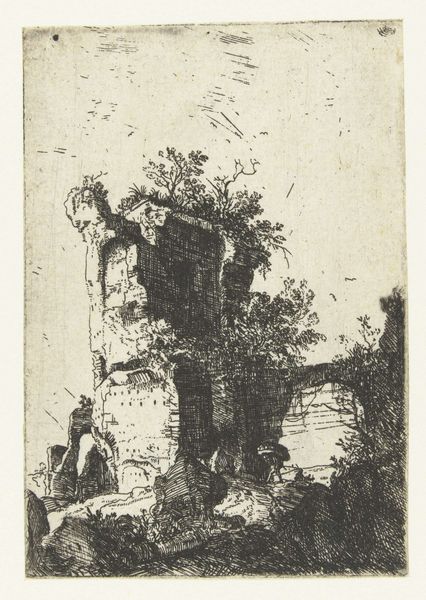
print, etching
#
dutch-golden-age
# print
#
pen sketch
#
etching
#
landscape
#
cityscape
Dimensions: height 48 mm, width 58 mm
Copyright: Rijks Museum: Open Domain
Curator: This print, currently held at the Rijksmuseum, is titled "Gebouwen met vierkante toren" – or "Buildings with a Square Tower". It comes to us from Karel du Jardin, dating to sometime between 1652 and 1659. Editor: It strikes me immediately as melancholic, even somber. The etching technique results in such fine, yet stark lines. It reminds me a little bit of Piranesi's views, though on a more domestic, human scale. Curator: Absolutely. As an etching, the piece employs a landscape style common for the Dutch Golden Age, evoking not just a place, but the psychological space it creates. Do you find anything specifically resonant about this tower as the primary visual structure of the scene? Editor: Definitely. The square tower is somewhat attenuated and looks worn. The whole cityscape seems as if it were slowly dissolving. The sharp verticals contrast nicely with the textured horizontal marks indicating the ground cover. What associations are awakened with these kind of buildings in the collective memory? Curator: In Du Jardin's time, cityscapes frequently represented a complex interplay between burgeoning commercial power and reminders of history and impermanence. A lone tower, however plain, speaks of enduring architectural intention against natural or man-made decay. Its very squareness becomes symbolic, evoking strength and solidity. Editor: Right. The rough texture almost threatens to obliterate those square edges. Note too, the sharp distinction of the inking, which outlines volumes using dense clusters of dark lines, giving form, for example, to the mass of the tree. Curator: Observe too the presence of smoke rising in the left of the frame. Smoke symbolizes domestic industry but often hints at ephemerality, echoing that feeling of transient human activity amid historical grandeur. It may speak of a desire for upward mobility and commerce but equally gestures toward potential risks or a cautionary outlook, too. Editor: It's interesting how Du Jardin establishes the contrast in textures and patterns; there are those almost scratchy lines building the wall and the soft cloudy smudging to depict the sky, and so on. All these add visual intrigue in their contrasts, reinforcing the drama, the melancholia. Curator: Indeed, what we witness in these older prints is the capacity to render emotions from stone. Editor: Absolutely, a capacity we clearly observed in the subtle, contrasting ink strokes of Du Jardin's masterful landscape.
Comments
No comments
Be the first to comment and join the conversation on the ultimate creative platform.
